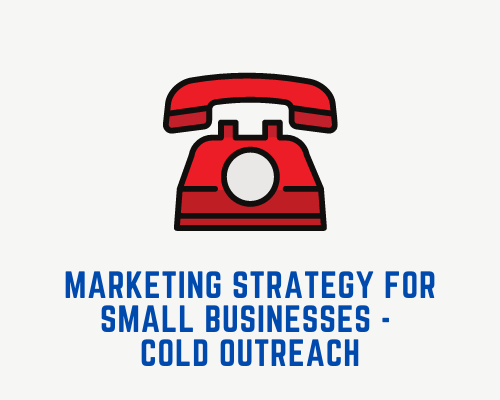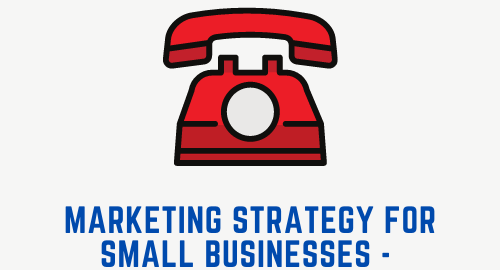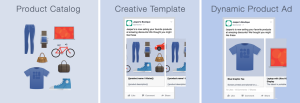
How can a small business approach customers?
In the past few seasons, we have been looking at how a small business can attract customers through Inbound Marketing. Inbound marketing is the process of building content in various formats that help to draw customers. Inbound marketing is an effective marketing strategy in the long term for small businesses and should absolutely be a part of the business’s marketing plan.
There’s a second kind of marketing called Outbound Marketing that small businesses can use. As the name suggests, this is a way of reaching out to a total stranger and telling them what your business can offer. Your offer could be a product, service or even a collaboration. Since you’ve never contacted this person before and they do not have a clue who you are, this process of reaching out to them is called Cold Outreach.
The purpose of a cold outreach (as with any other marketing strategy) is to identify a potential buyer, then reach out to them through calls, cold emails or social media and lead them towards a purchasing decision.
Cold outreach can also be used to generate brand awareness. A dedicated cold outreach strategy for brand awareness will ensure that you are targeting specific people or businesses with your brand. But, brand awareness does not mean spamming strangers with your latest poster or sending them a discount offer. The goal here is to allow the stranger the control of getting interested in your brand. Asking them to respond to something that does not require a lot of effort is a good start. Cold outreach followed by brand awareness makes a better impact on the person.
Let’s take an example. You get an email or a call from a company that you have never heard of and you get another email or call from a brand that you know. Which one are you more likely to respond to? Obviously, the ‘known brand’ over the ‘never heard company’, right? That’s why brand awareness is important.
I like one tactic very much. Sometimes my social media connections ask my opinion on their product or service. They ask me because I am likely their target audience. These connections may not be known to me, but when they request feedback from me, I like to respond. But to give them feedback, I’m curious to know about their product and the company. So I spend time doing some research about them. This way, they have achieved their brand awareness objective. What started with just a cold outreach through a business connection ended with brand awareness. This is called a Prospecting Strategy.
Throughout this blogging season, I’m going to cover different aspects of cold outreach. You will realise that converting a stranger to accept your offer requires planning and a lot of patience!
Here are the topics we will go through.
- Networking in marketing to grow your business
- The challenge of startup networking – getting new leads
- How to smartly pitch in business networking groups?
- Can cold calls really help build your B2B network?
- Approaching your social network marketing strategy the right way
- The biggest networking opportunity is lying in your inbox!
- Using Linkedin for B2B Marketing
The art of cold outreach
As I said, cold outreach requires planning and patience. Here are some pointers to remember when adopting this strategy for your small business.
- Understand the purpose or the goal of cold outreach: The purpose of cold outreach is very simple – build a connection with the person. If you do not achieve that, then the stranger is not interested in hearing from you, let alone buy from you. People buy only from whom they trust. So, first and foremost, build a relationship with the stranger.
- Define your ideal customer: Before you approach someone, know about them as much as you can. This does not mean that you collect personal information about them, rather it means that you see whether they are a fit for your product. If they are a fit, then you can tailor your message to them to align it to what they require.
- Build a rapport: A common mistake that businesses make is to ask for too much from the stranger in the first communication itself. Sending them a website link, talking about your product, it’s features etc. can be very daunting for a stranger and will instantly put them off. Rather than being too sales-y in the first conversation, invest sometime in building a rapport.
- Short and direct is better: Building up to that, keep your conversation short and to the point. Remember to not sell your company and product too much in the first message. Respect their time and only ask them a simple question in the first message.
- Always follow-up: If you have messaged someone and they have not replied, it doesn’t always mean that they are not interested. They may be busy or may want to check out your company before responding to you. Also, since they don’t know you, they may not feel compelled to reply the first time. In all these cases, it is perfectly acceptable to send a follow-up message to ask them if they are interested. If they still aren’t, then you can close that discussion.
- Measure your performance: You should have a clear and measurable outcome from this cold outreach. Are you reaching out to people to drive sales, invite them for a demo or partner with you? When you have that clearly defined, you will be able to keep your approach outcome centric. You will be able to tailor your message for each person so that it can convert them to take that action.
Now that you have an idea of what cold outreach is, let’s dive into specific strategies. By the end of this season, you will be able to employ this technique effectively for your business.
Digital & Social Articles on Business 2 Community
(45)
Report Post


